From bell peppers to Carolina reapers, we’re covering the most popular types of peppers from mild to hot in this helpful guide to pepper varieties!
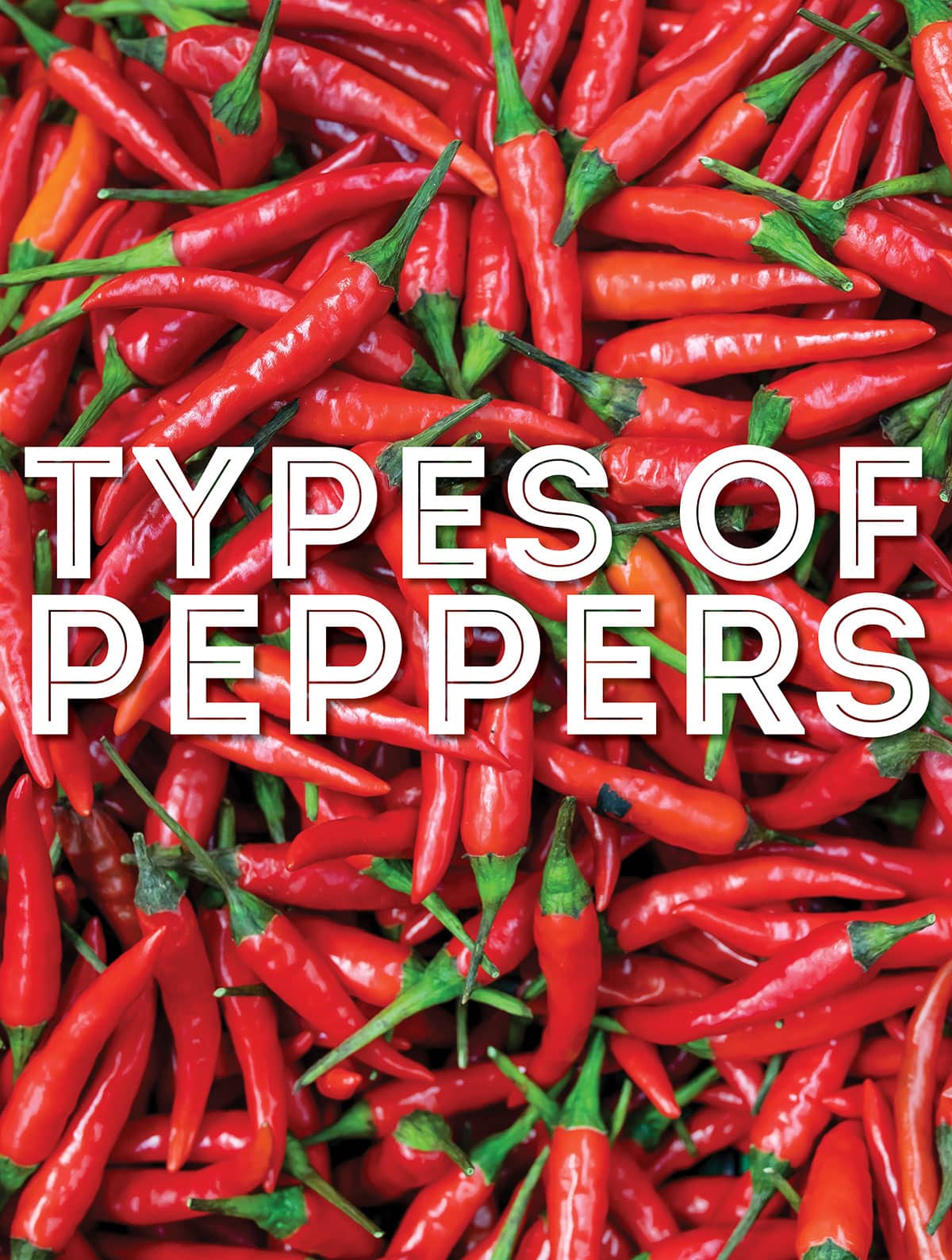
If you’re anything like me, you grew up with the humble bell pepper formulating your opinions on the use of peppers.
This wasn’t a bad thing as we ate them in fajitas, on salads, and with veggie dips. As I got older and more able to “take the heat”, the world of peppers opened up and thus became a big part of my cooking.
So here are 29 common (and uncommon but useful) types of peppers you should consider for your cooking. We’re going in order of mild to hot, and then continue with stupid hot. We will use the standardly accepted Scoville Heat Unit Scale (SHU) to rank these beauties and beasts.
What is the Scoville Heat Unit Scale?
The Scoville heat unit scale rates how spicy peppers, as well as common products made from peppers, like chili powder, are. The rating was devised by an American pharmacist Wilbur Scoville in 1912.
The Scoville heat unit (SHU) scale allows you to have an idea of how comparatively hot one is versus another. Bell Peppers start us off at zero. The familiar jalapeno will land somewhere between 2,500 and 8,000. Typically peppers you can get at the grocery won’t go past 500,000, but in specialty markets and through special order you can go well beyond this as the scale goes to 16 million.
How do they calculate Scoville units?
To calculate the amount of Scoville heat units, they take capsaicin oil from a dried pepper and mix it with sugar water. The concoction is then given to a panel of taste-testers. The solution is diluted until the panel just gets to the point where they say they can barely detect any heat at all.
So, let’s say that they are testing the cayenne pepper. They found they had to diluted it to between 35,000 to 50,000 parts water/sugar mix to oil from the pepper before the panel said they could barely taste it. This ratio becomes the SHU rating. While the scale goes up to 16 million, there are no peppers rated at 16 million. That would be the rating for pure capsaicin oil. (For reference, defensive pepper sprays are around 5 million).
Types of Peppers
Let’s look at 30 types of pepper ranked from “Mild” to “Are You Kidding Me?!” We’ve ranked these in order from least to most SHU units.
- Bell Peppers (SHU 0)
- Shishito (SHU 50 to 100)
- Banana Peppers (SHU 0 to 500)
- Sweet Italian Pepper (SHU 100 to 500)
- Piquillo (SHU 500 to 1000)
- Cuban Pepper (SHU 1,000)
- Poblano (SHU 1,000 to 2,000)
- Anaheim Peppers (SHU 500 to 2,500)
- Cherry Peppers (SHU 2,500 to 5,000)
- Pasilla Peppers (SHU 1,000 to 2,500)
- Jalapeno (SHU 1,000 to 8,000)
- Fresno Peppers (SHU 2,500 to 10,000)
- Yellow ChilI Peppers (SHU 100 to 15,000)
- Serrano Peppers (SHU 10,000 to 25,000)
- Guajillo Chili Peppers (SHU 2,500 to 30,000)
- Cayenne Peppers (SHU 35,000 to 50,000)
- Rocoto Peppers (SHU 30,000 to 100,000)
- Bird’s Eye Peppers (SHU 50,000 to 100,000)
- Piri Piri (SHU 50,000 to 175,000)
- Datil Peppers (SHU 100,000 to 300,000)
- Habanero (SHU 100,000 to 350,000)
- Scotch Bonnet (SHU 100,000 to 400,000)
- Ghost Pepper (SHU 1,000,000)
- 7 Pot Douglah Pepper (SHU 1,000,000 to 1,500,000)
- Komodo Dragon Peppers (SHU 1,400,000)
- Trinidad Moruga Scorpion Pepper (SHU 1,600,000)
- Carolina Reaper (SHU 1,000,000 to 2,200,000)
- Dragon’s Breath (SHU 2,480,000)
- Pepper X (SHU 3,018,000)
Bell Peppers (SHU 0)
Bell Peppers are as essential in my kitchen as my chef’s knife and fire extinguisher, just joking (kind of). Also known as paprika or sweet peppers, they are most commonly green, yellow, orange, or red, but can also be found in purple peppers, white, brown, and stripped. Peppers are native to Mexico as well as Central & South America. Peppers were brought to Europe from the “New World” in 1493, but the bell pepper cultivar didn’t come around until the 1920s. The world’s largest producer of bell peppers today is China. Looking for some new motivation for using the mildest of peppers in your cooking? Here are 14 of Our Favorite Bell Pepper Recipes.
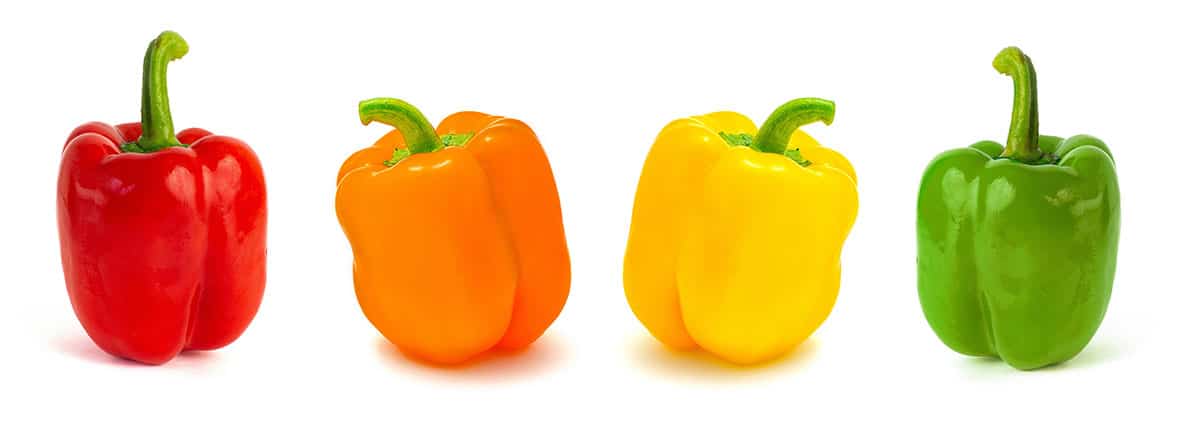
Shishito (SHU 50 to 100)
These small green peppers are native to SE Asia. While they aren’t generally very hot, per the SHU score, there is some variation from pepper to pepper, so don’t be surprised if you bite into one and get more than you were expecting. You can eat these raw, but we think they are better roasted (roasted pepper guide here!) or perhaps deep fried and served as an appetizer for which their small two bite size is perfect.
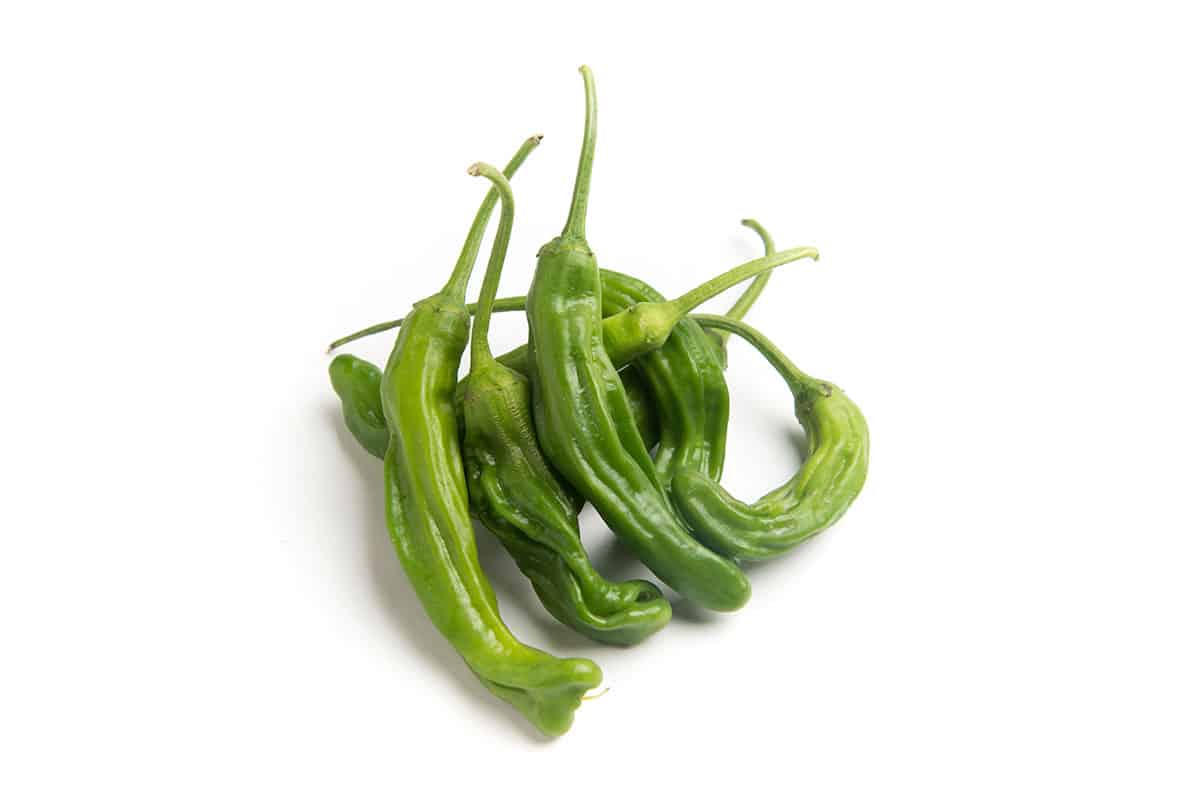
Banana Peppers (SHU 0 to 500)
These are a sweet pepper that is always an option at Subway and other sandwich shops. While they aren’t really hot, they provide a mildly spicy alternative to bell peppers.
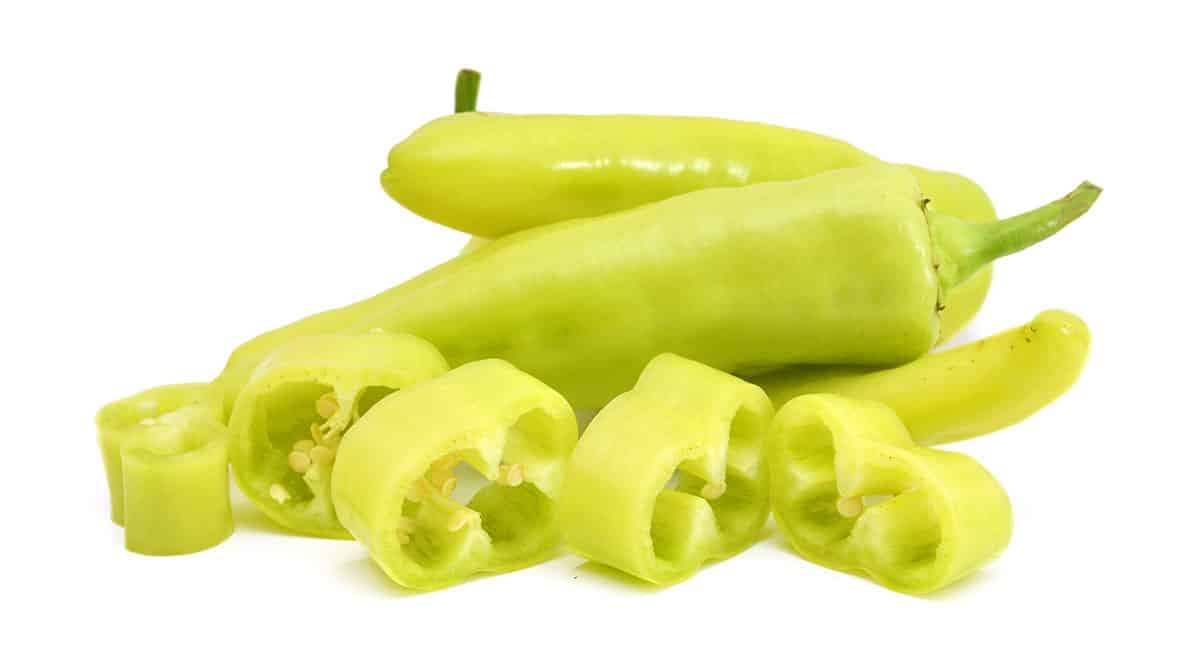
Sweet Italian Pepper (SHU 100 to 500)
Also called Pepperoncini, Golden Greek, friggitelli, or Tuscan Peppers. They are very similar to banana peppers in size and color, and can pretty much be used in place of them. They are often found pickled, and are an important ingredient in pimento cheese. Our favorite culinary use is in stuffed peppers!
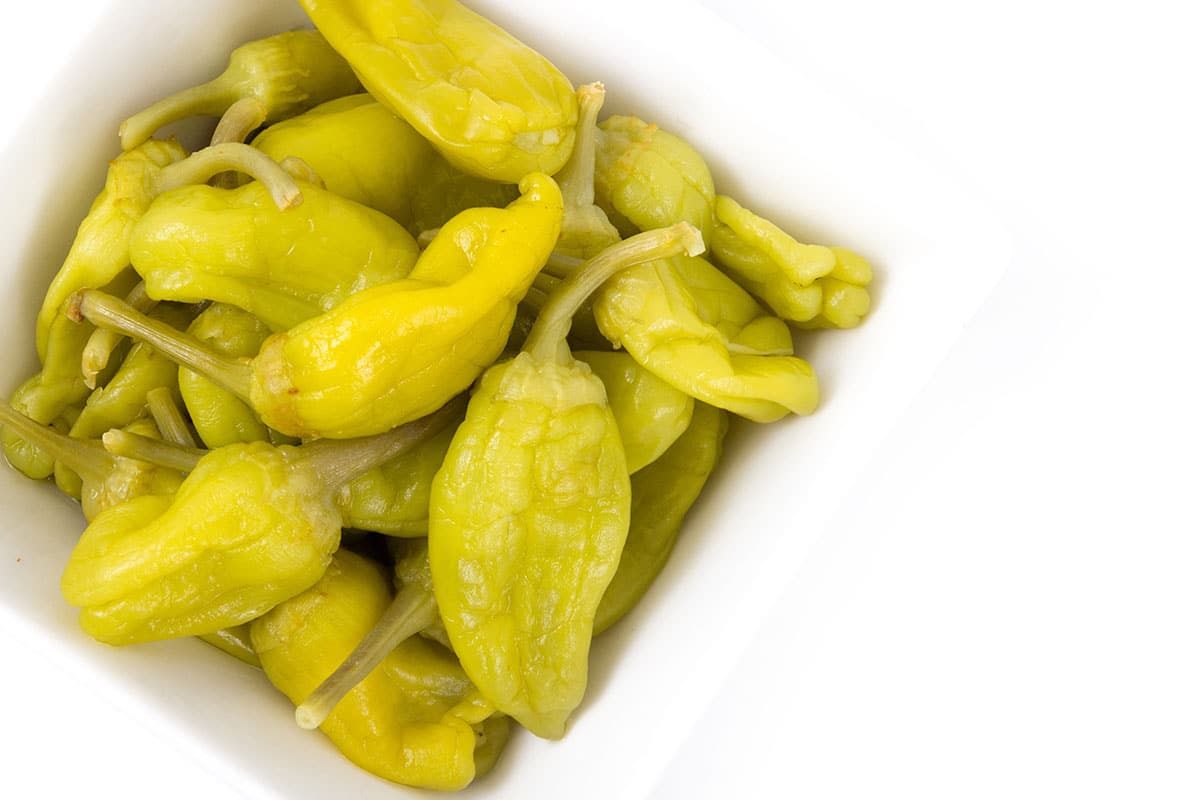
Piquillo (SHU 500 to 1000)
Piquillo are native to Northern Spain. They have a sweet taste with a thicker skin, similar to bell peppers, which makes them crunchy. They are tangy and not too hot by most people’s standard. You will often find these jarred, roasted in oil.
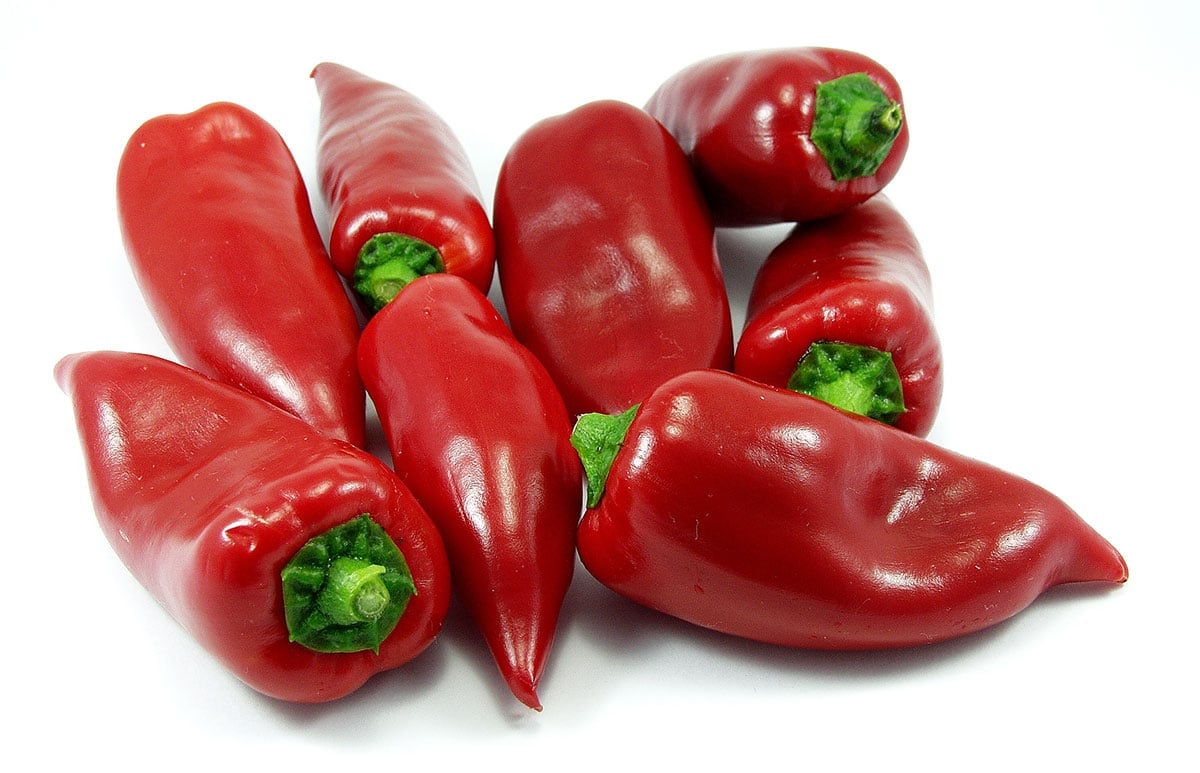
Cuban Pepper (SHU 1,000)
Cuban Peppers are also known as Cubanelle Peppers. They are a mild pepper that you can easily use as a substitute for bell peppers if you want a modicum of tang you don’t get from the bell. They are often used in yellow mole sauce, and are a good add to subs and pizza. Try them in Roasted Red Pepper Soup!
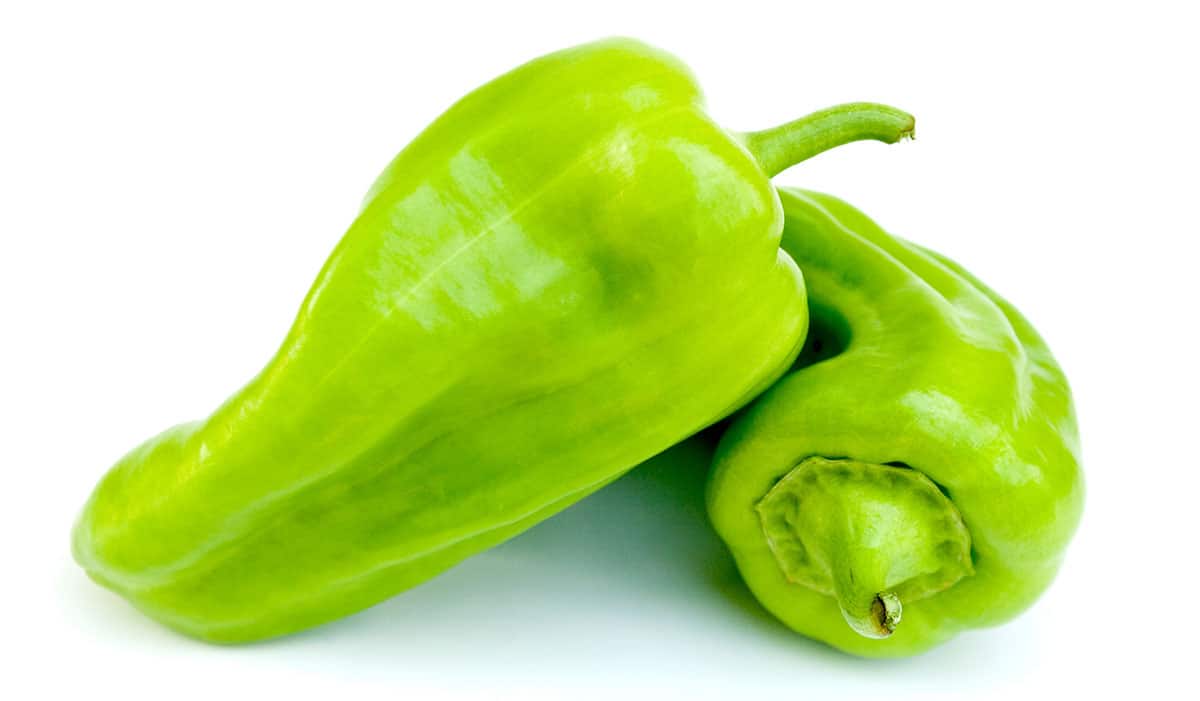
Poblano (SHU 1,000 to 2,000)
Poblano is a popular Mexican native. The green poblano are fairly mild, but the red a bit hotter. Poblanos are good roasted, fried, stuffed, and in mole sauces.
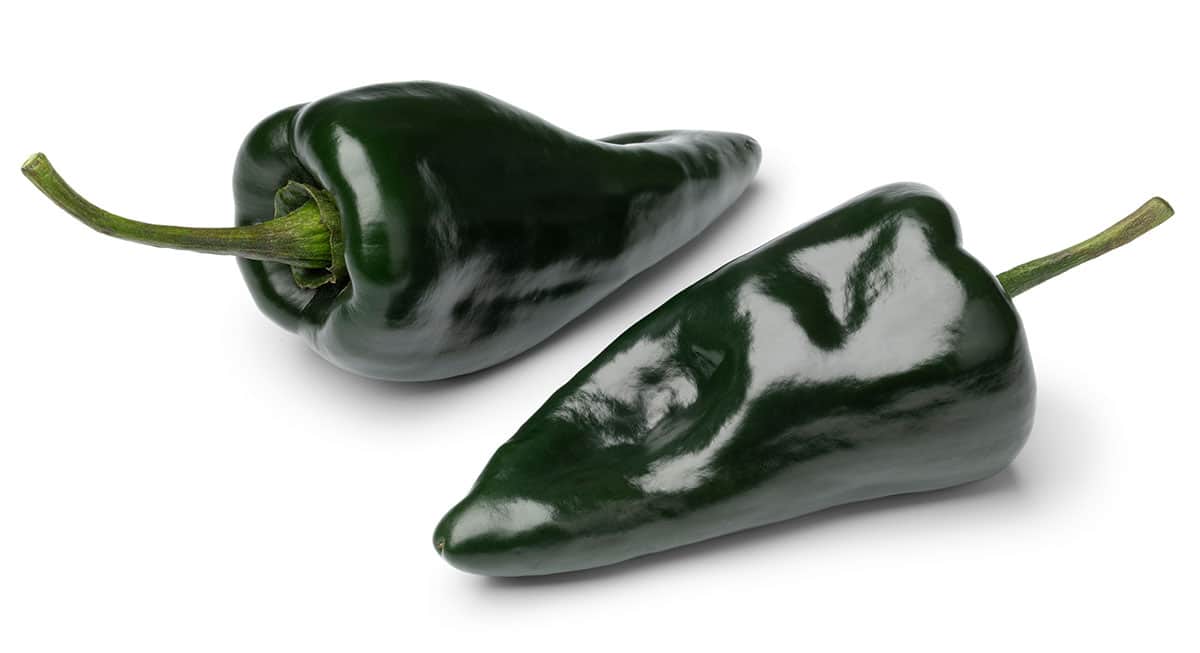
Anaheim Peppers (SHU 500 to 2,500)
Anaheim is a mild, sweet, and tangy pepper named after the city of Anaheim. They came to California from their origin in New Mexico. Some sites don’t list their SHU as high as 2,500, but we believe the higher range is appropriate as there is a wide variation between the milder Anaheim’s grown in California vs the hotter peppers grown in New Mexico. They are often sold as canned green chilis, and are generally mild enough to be eaten raw.
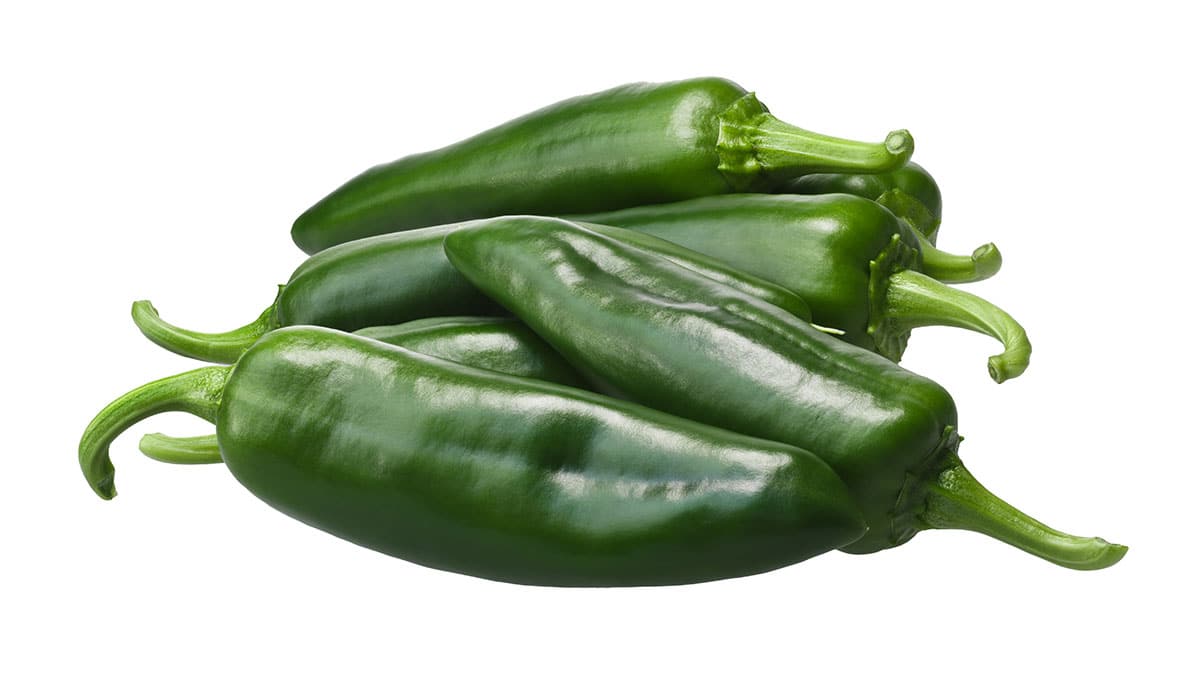
Cherry Peppers (SHU 2,500 to 5,000)
Cherry peppers are a sweet pepper variety with a good bit of spicy kick. They are considered one of the best pickling peppers and often used as a condiment that way.
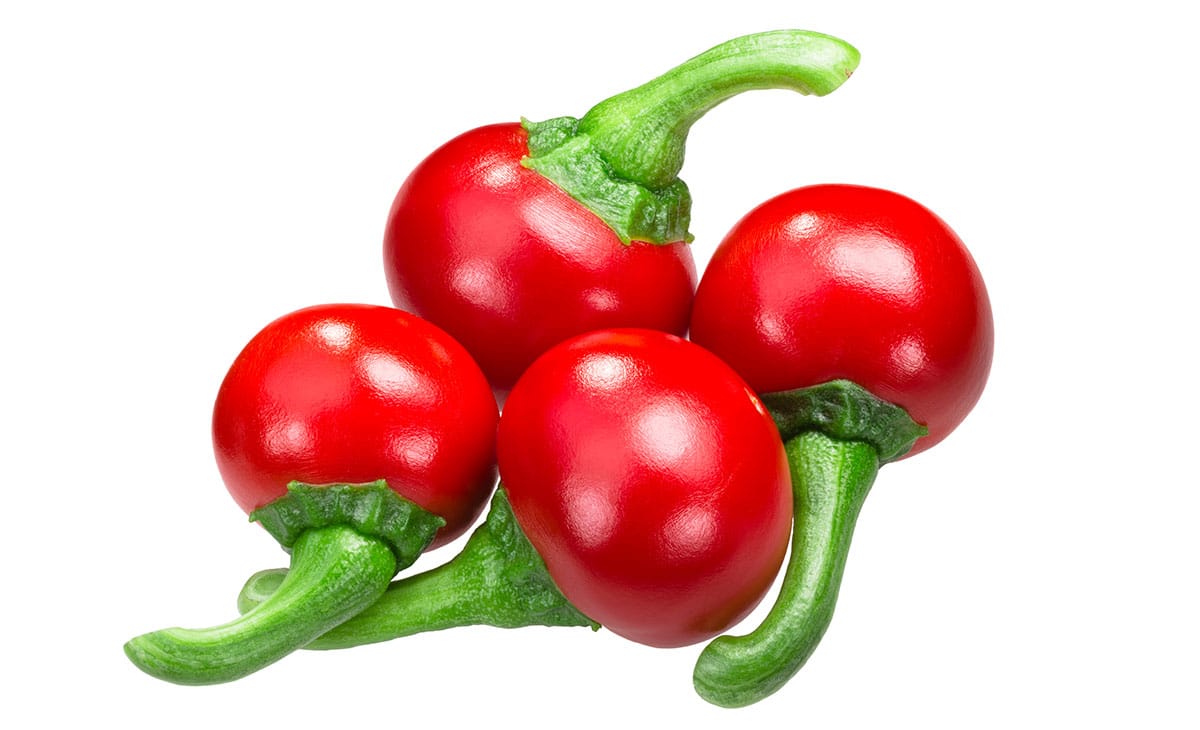
Pasilla Peppers (SHU 1,000 to 2,500)
These are yet another variety popular in mole sauce, but also salsa and ground into a seasoning powder. Their name translates into little raisin as their dried skin certainly resembles a raisin.
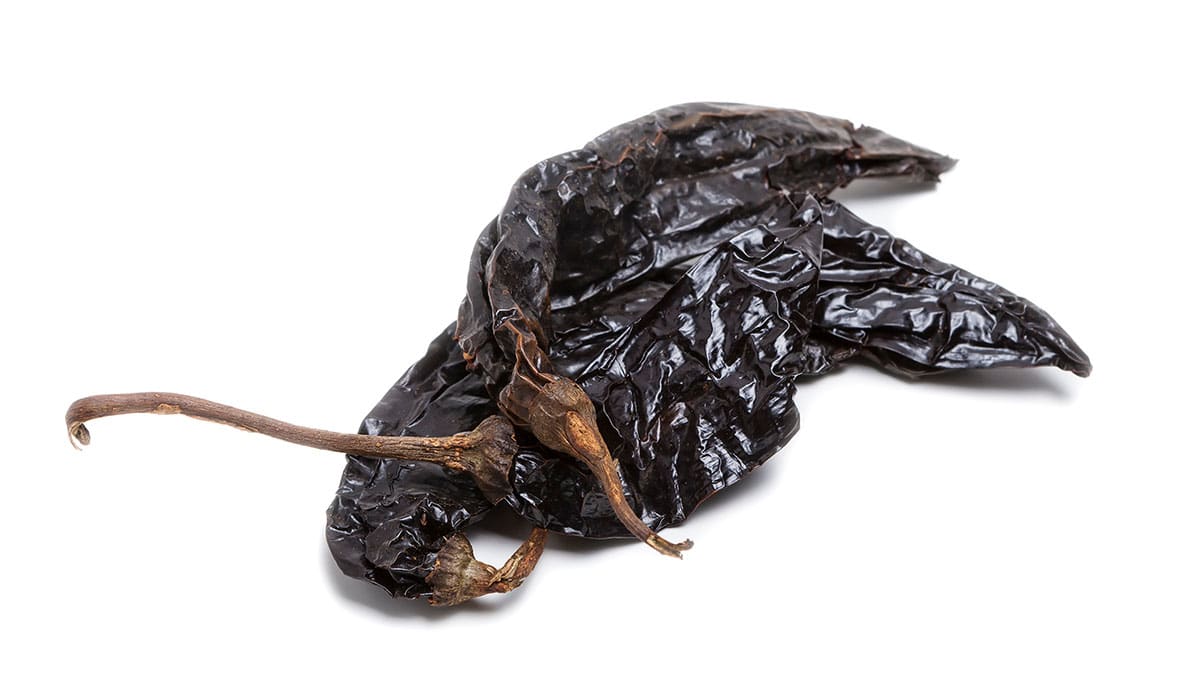
Jalapeno (SHU 1,000 to 8,000)
Okay, this is the first pepper that for most people starts getting “hot”. As the SHU rating suggests, there is a pretty wide range here. The jalapeno is one of the most commonly used peppers in cooking and is a great add to blender salsas, vegetarian chilis, or stuff it with cheese in the form of these vegetarian jalapeno poppers!
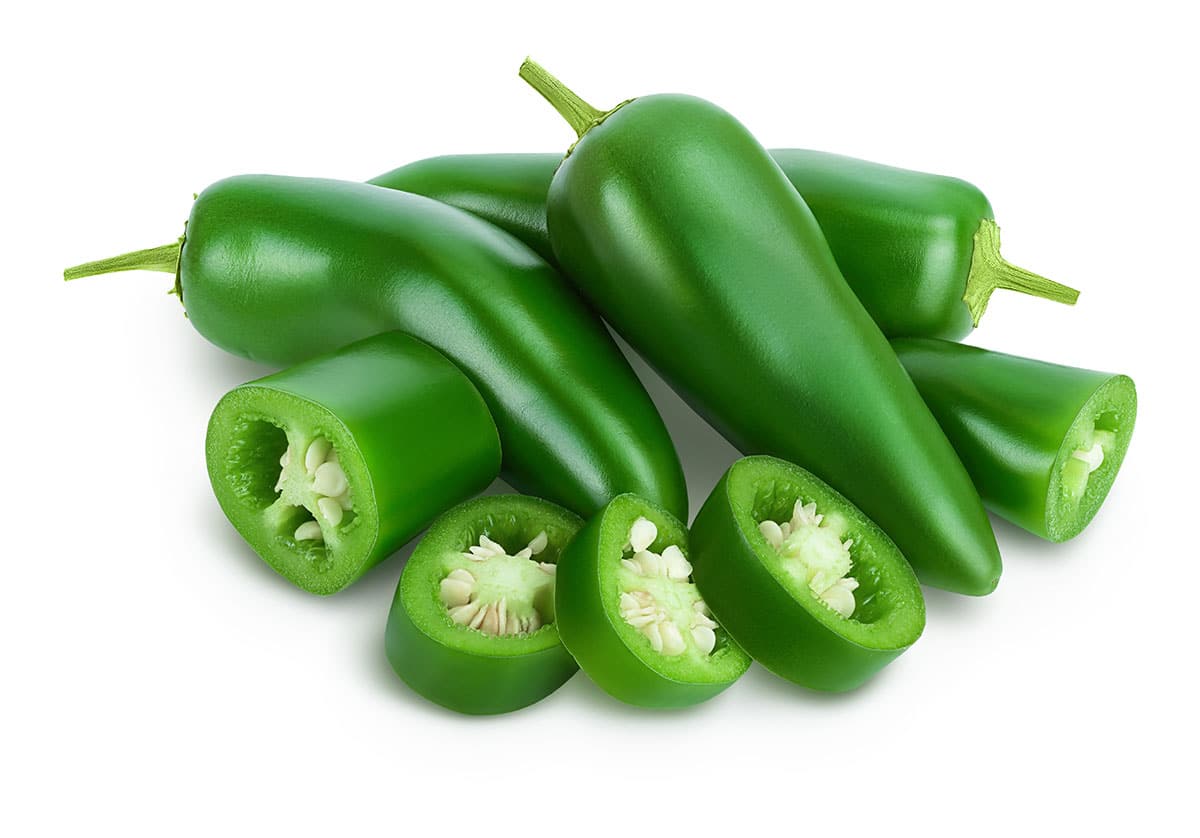
Fresno Peppers (SHU 2,500 to 10,000)
This is a fairly recent cultivar developed in 1952, and named after the city of Fresno California. They look and taste like jalapeno peppers, but can be even hotter and are described by many as having a smoky flavor. This has helped make them popular in many chili and salsa recipes. They can generally be used in place of jalapenos.
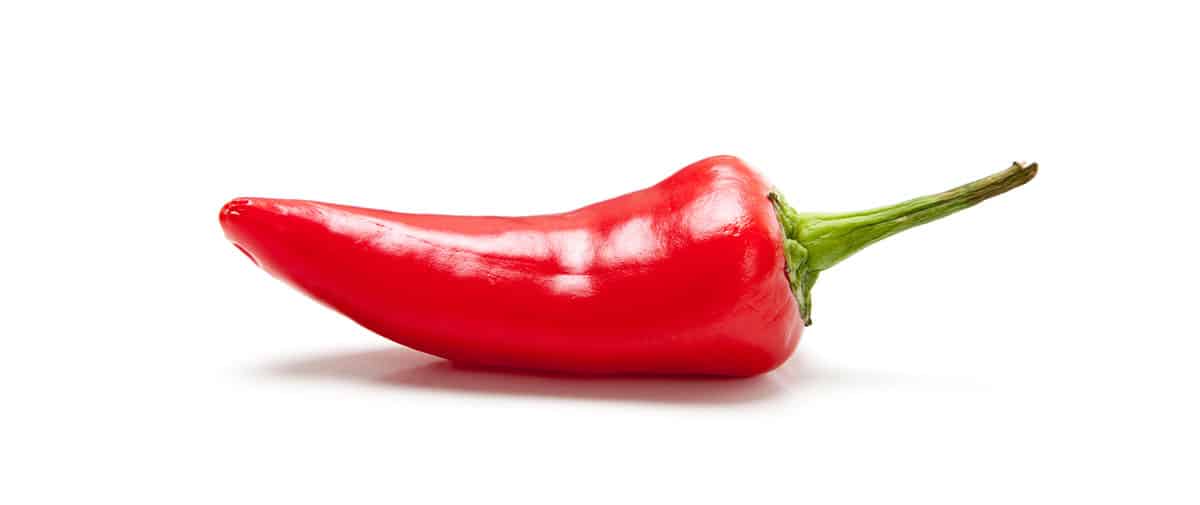
Yellow ChilI Peppers (SHU 100 to 15,000)
Yellow chili peppers, also known as Güero Chil0s or Caribe chili, have a large SHU range because there are so many varieties of this pepper which obviously ranges from mild to pretty hot. They are often stuffed, roasted, grilled, pickled, steamed, sautéed, stir-fried, used on pizza, or pretty much you name it. They are native to Central and South America where there is evidence they have been eaten for thousands of years. Early Spanish and Portuguese explorers brought them back to Europe from where they quickly spread to Asia. We don’t have to follow the spice route to get them today. While not in many big market groceries, you can find these in specialty markets, farmer’s markets, or just order them on-line.
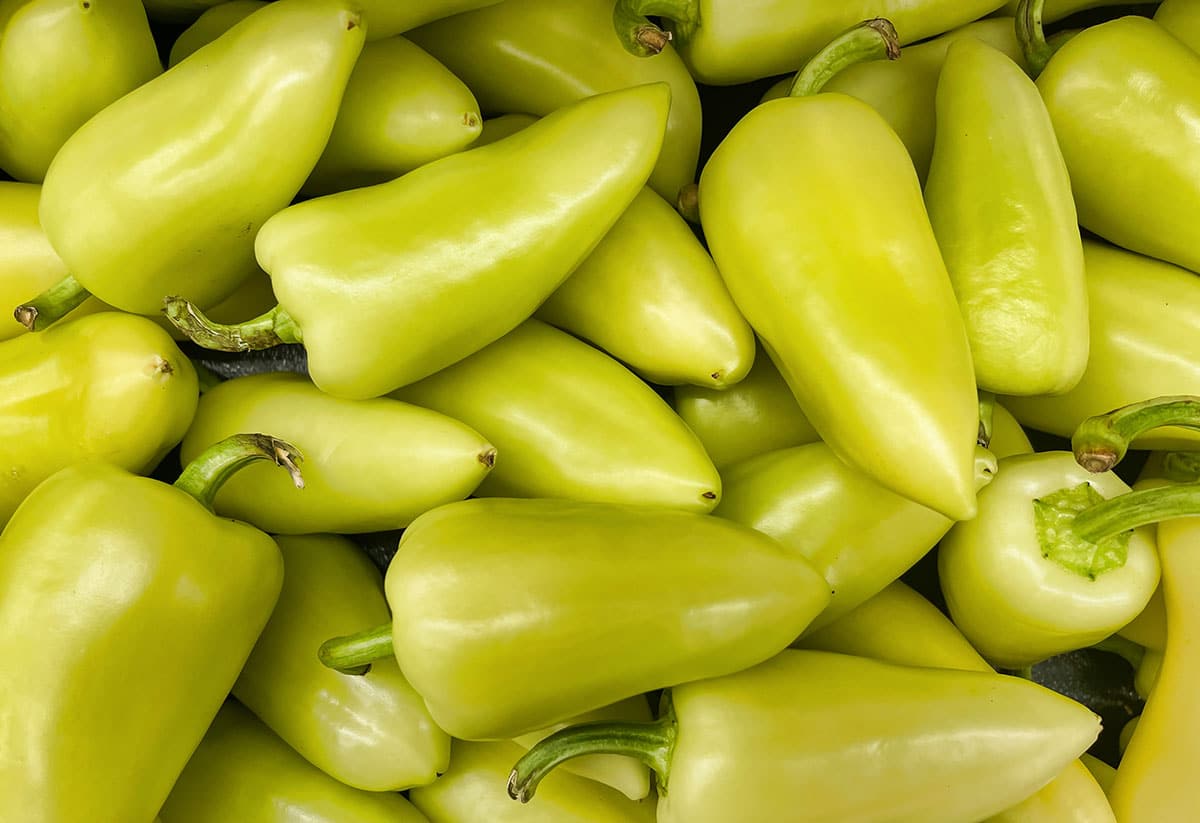
Serrano Peppers (SHU 10,000 to 25,000)
Serranos are from the Mexican states of Puebla and Hidalgo. Their name comes from the Sierras Mountains in those regions. Though hotter than Jalapenos, they are often eaten raw, but also used in pico de gallo, salsa, and chili. They are one of the most popular peppers in Mexican recipes.
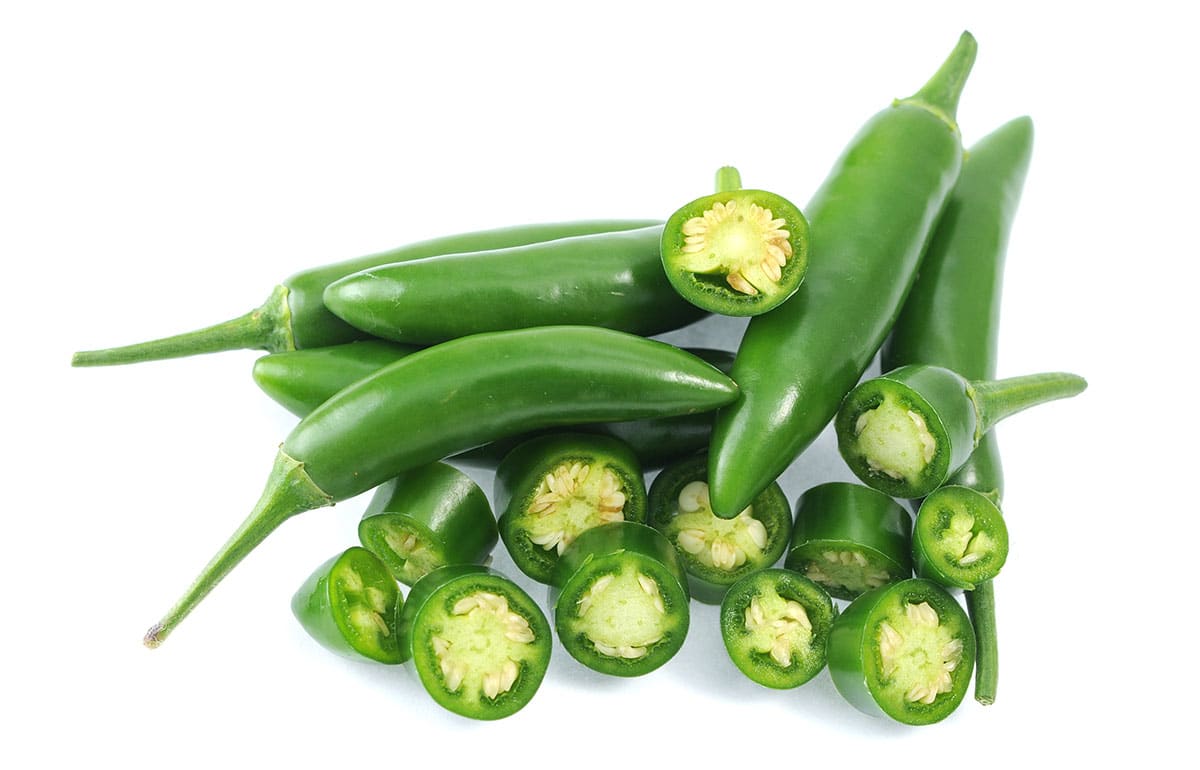
Guajillo Chili Peppers (SHU 2,500 to 30,000)
This is the dried form of a Mirasol Chili. They are one of the most commonly used dried peppers in Mexico. They are known for their sweet, fruity, and tangy flavor and for being hotter than jalapenos. In Mexico they are used primarily in salsas and sauces.
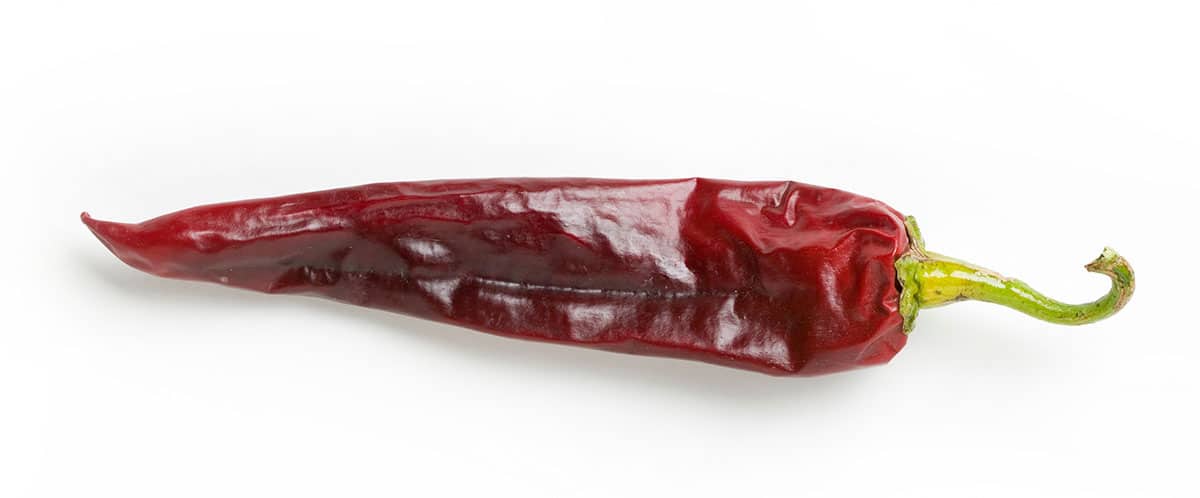
Cayenne Peppers (SHU 35,000 to 50,000)
Okay, now we are starting to get into the “quick give me that water bottle” hot. They are usually red or green and popular throughout North and South America. They are most commonly ground into a dried spice or into chili flakes. which is the form you will generally find them in at the grocery. Most hot sauces sold in the United States use cayenne pepper.
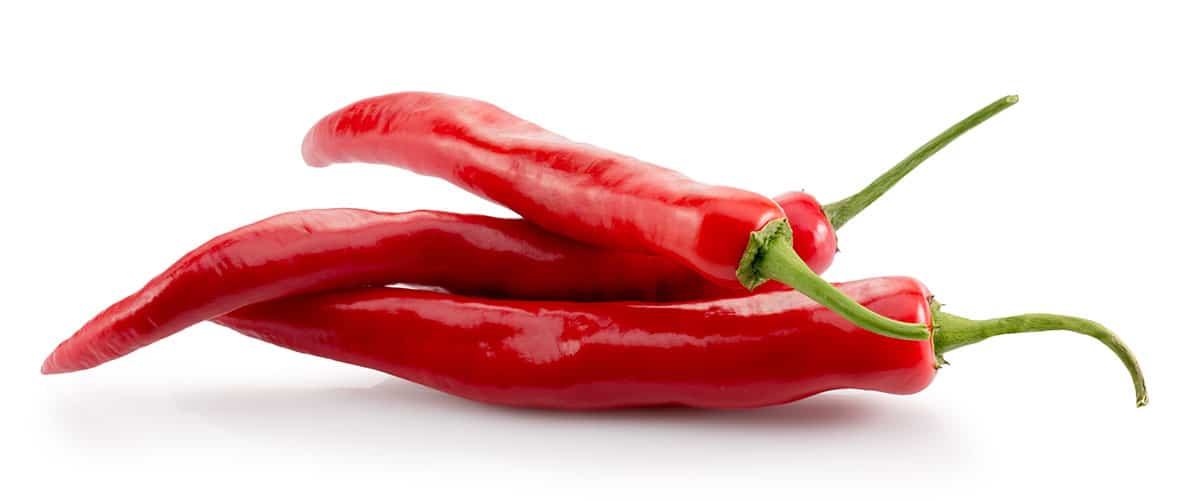
Rocoto Peppers (SHU 30,000 to 100,000)
Rocotos look a lot like small bell peppers, but swapping would be a mistake you wouldn’t want to make in cooking. They grow in the Andes Mountains and the highlands of Central America where there is evidence of their cultivation as long as 8,000 years ago. The Rocoto have a thick skin that makes drying them a bit difficult, so they are often used fresh in cooking. They are also used in hot sauces and salsas.
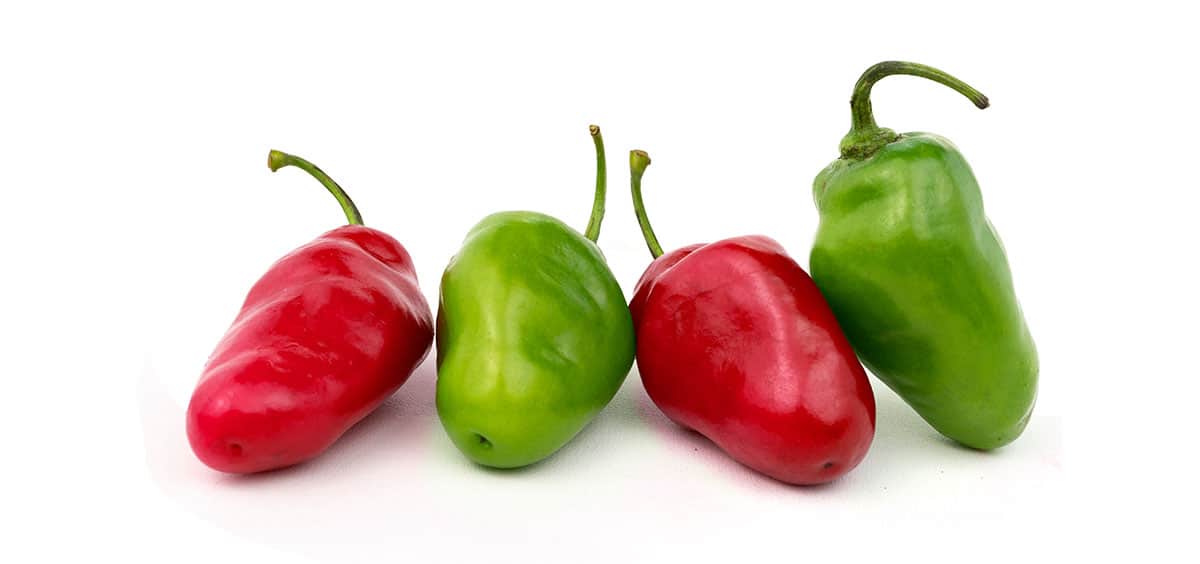
Bird’s Eye Peppers (SHU 50,000 to 100,000)
Unlike the previous peppers we discussed, Bird’s Eye are not native to the Western Hemisphere, but are grown in Thailand and used extensively in the hot sauces and chili powders of Thai cuisine. These peppers have also been used around SE Asia medicinally to ease the pains of arthritis and rheumatism.
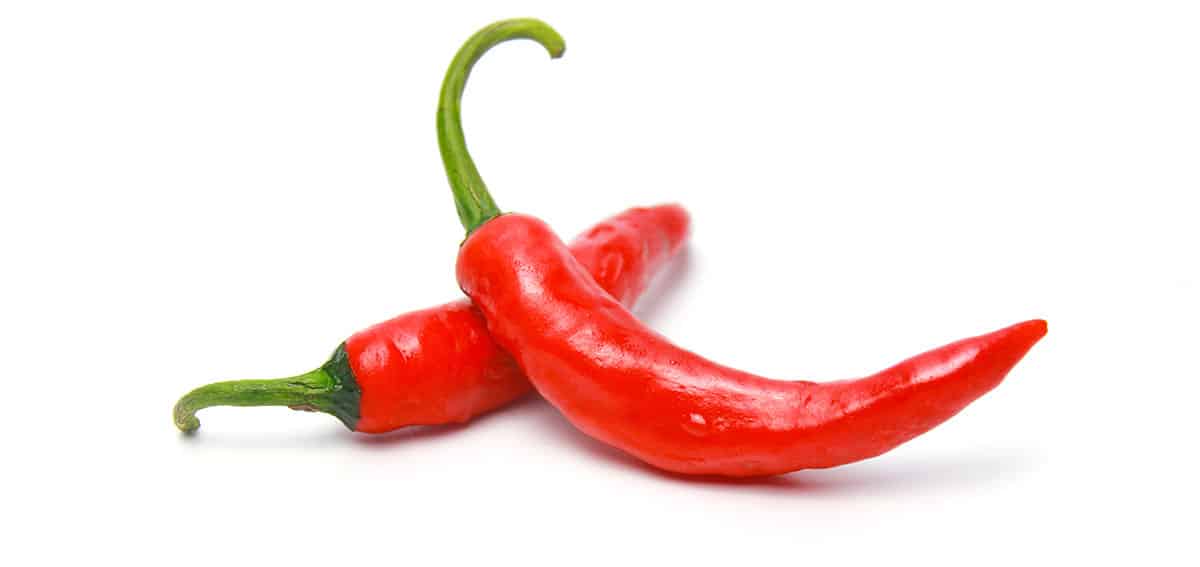
Piri Piri (SHU 50,000 to 175,000)
Piri Piri peppers are interesting as they show the migration of peppers around the world. They were native to South America but brought to Europe by Portuguese explorers. From there they were introduced to Portugal’s Southwest African colony, now Mozambique. Today they are cultivated over much of Africa and used in not just local foods and medicines, but also commercial food production and pharmaceuticals. It is also known as African Birds Eye or African Red Devil Pepper.
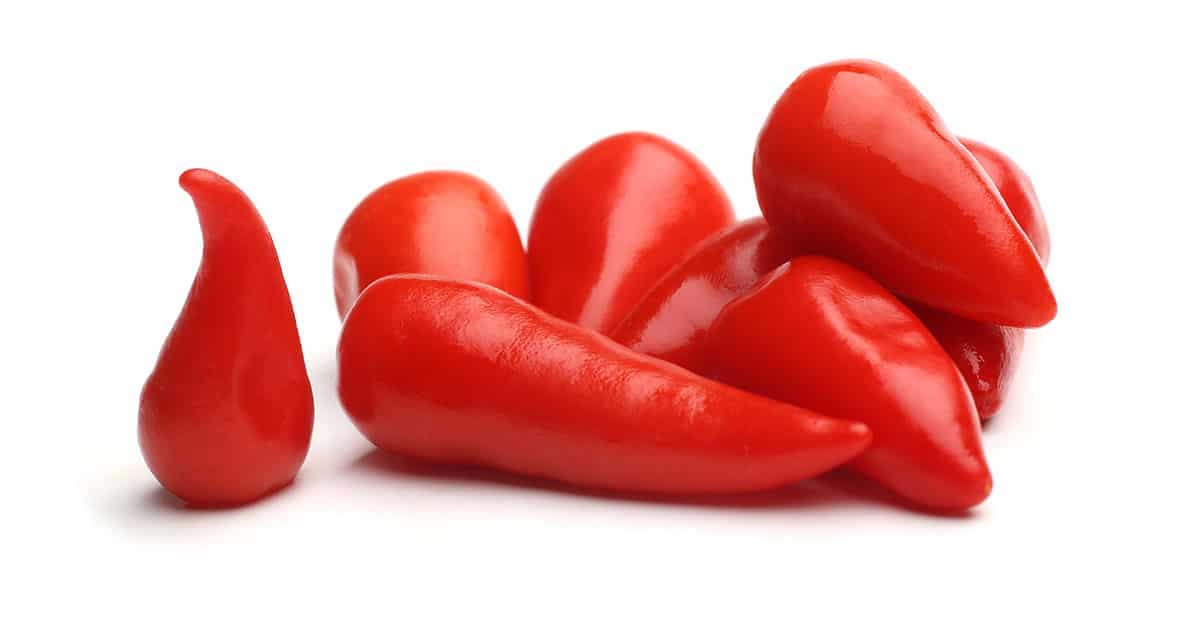
Datil Peppers (SHU 100,000 to 300,000)
Datil peppers are an interesting pepper as they have their own festival. The peppers are a native to St. Augustine Florida where the people are so proud of their peppers that each October, they have the Datil Pepper Festival where the peppers are sold and local chefs demonstrate their skill at cooking with these little gems.
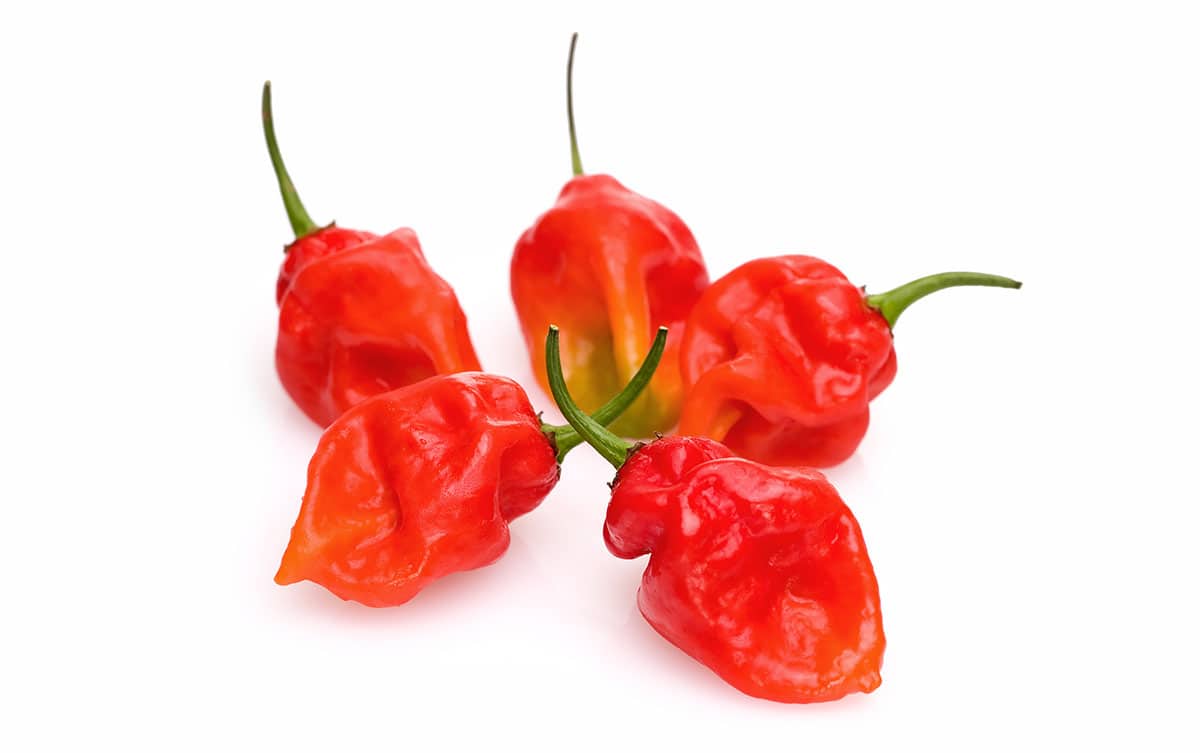
Habanero (SHU 100,000 to 350,000)
Habanero is sort of the gold standard for hot peppers against which others are compared. Often, for example, peppers are said to be hotter than jalapenos, but not quite habanero hot. This makes sense as they are about the hottest pepper that is easily available. Habaneros grow in hot climates, and are an important crop in Mexico’s Yucatan. They are often stewed, fried, fermented, and used to make any recipe crazy hot. They are named after the Cuban city of Havana. They aren’t grown anywhere near there, but Havana was long a trading center for such peppers.
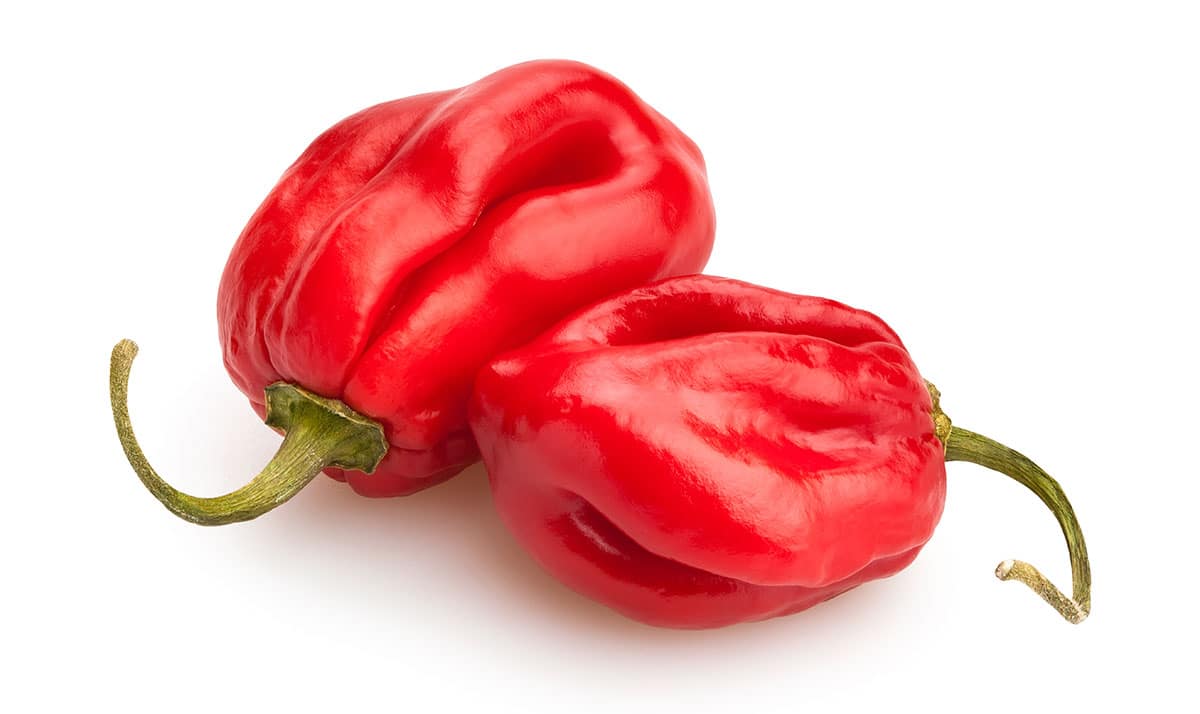
Scotch Bonnet (SHU 100,000 to 400,000)
These peppers are often confused with Habanero peppers and do have about the same level of hotness. They are widely grown in West Africa and the Caribbean. They are often used in sauces, condiments, and in traditional Caribbean dishes like pork or chicken jerk recipes.
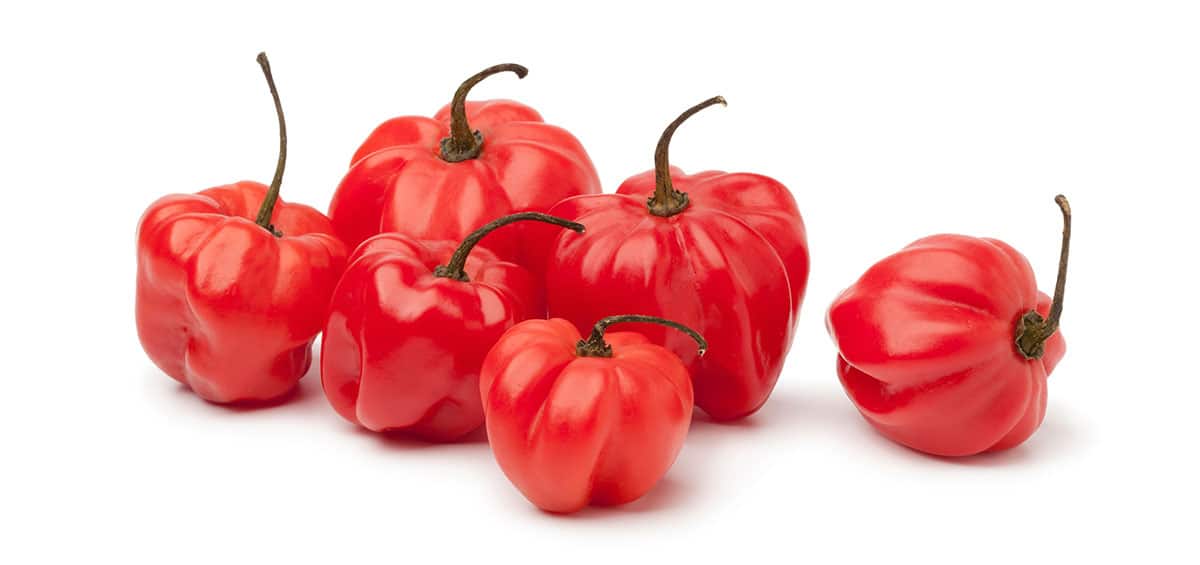
Ghost Pepper (SHU 1,000,000)
Ghosts were once considered the hottest peppers in the world, so we are getting up there with the big boys now. They lost that “honor” to the Trinidad Scorpion in 2011 and then in turn to the Carolina Reaper in 2013. It seems to us the best use for these is for dares and drinking games. There was, however, a report of a man who in 2016 ate a ghost pepper puree and then tore is esophagus while retching. You can find ghost peppers on Amazon.
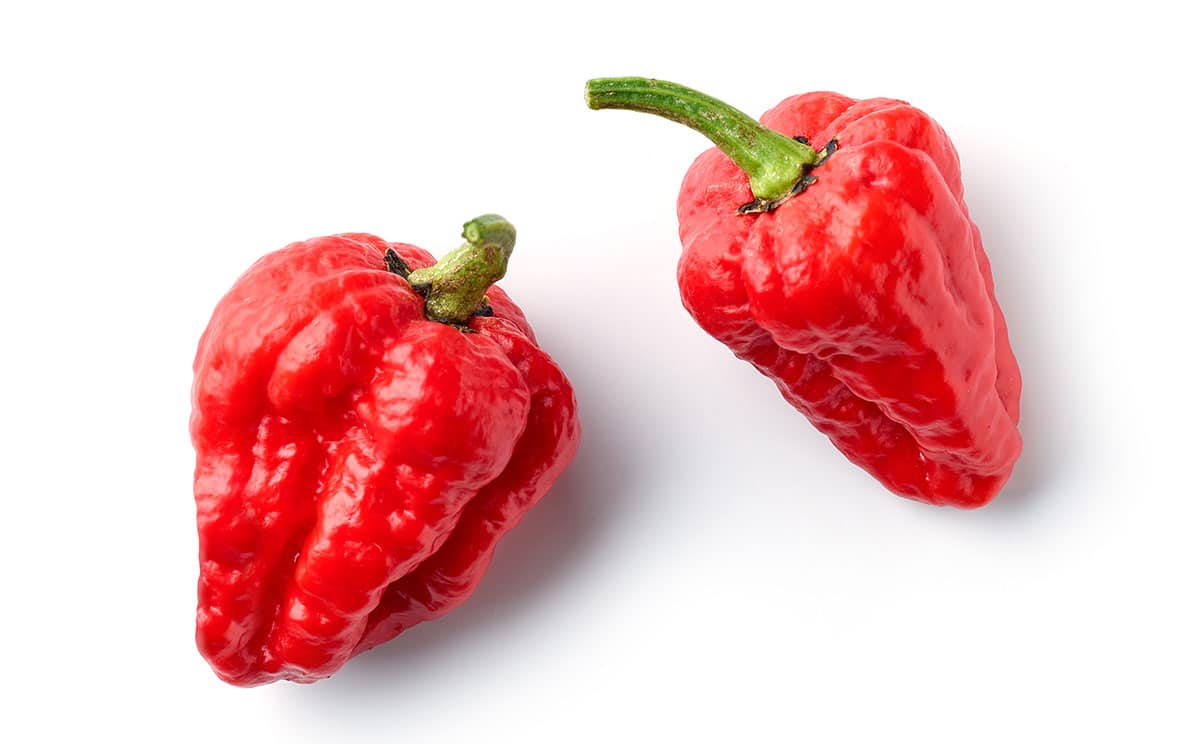
7 Pot Douglah Pepper (SHU 1,000,000 to 1,500,000)
Also known as 7 Pot Chocolate Pepper, this product of Trinidad isn’t the ubiquitous red hue pepper, but instead a chocolatey brown color. If you can get past the fire in your mouth, you will find a sweet fruity taste that some say is a bit nutty.
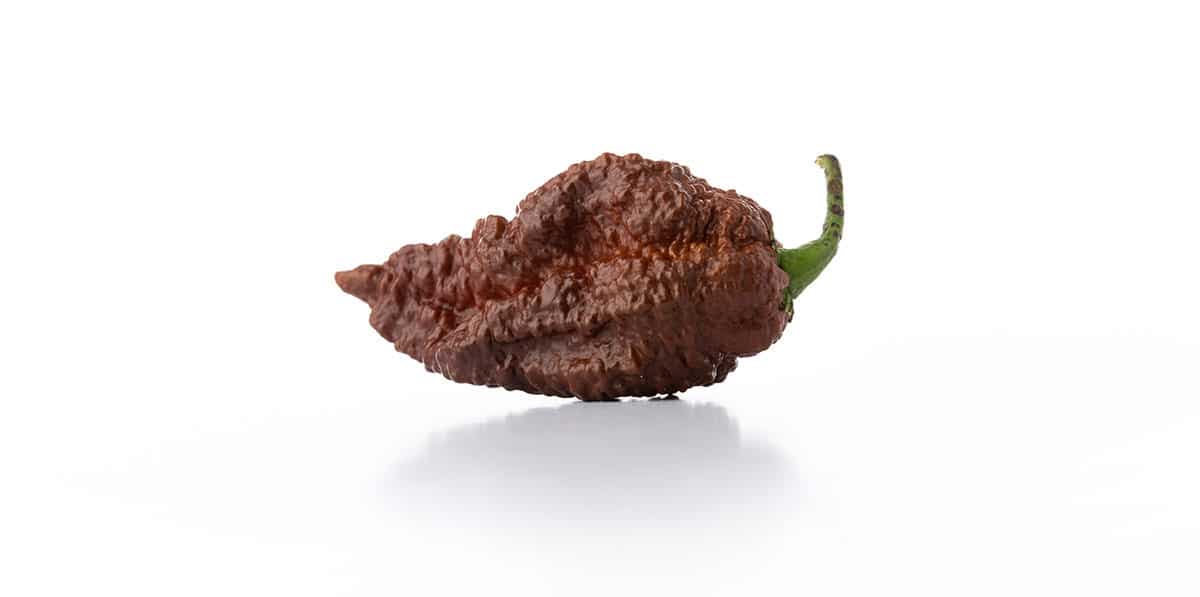
Komodo Dragon Peppers (SHU 1,400,000)
Komodo Dragons are similarly hot as Ghost Peppers, and like ghosts they don’t immediately set your mouth on fire but after a short delay come full force. In the United Kingdom they are sold in at least one grocery chain, but in the USA your best bet is one of several on-line sites. Or, grow your own.
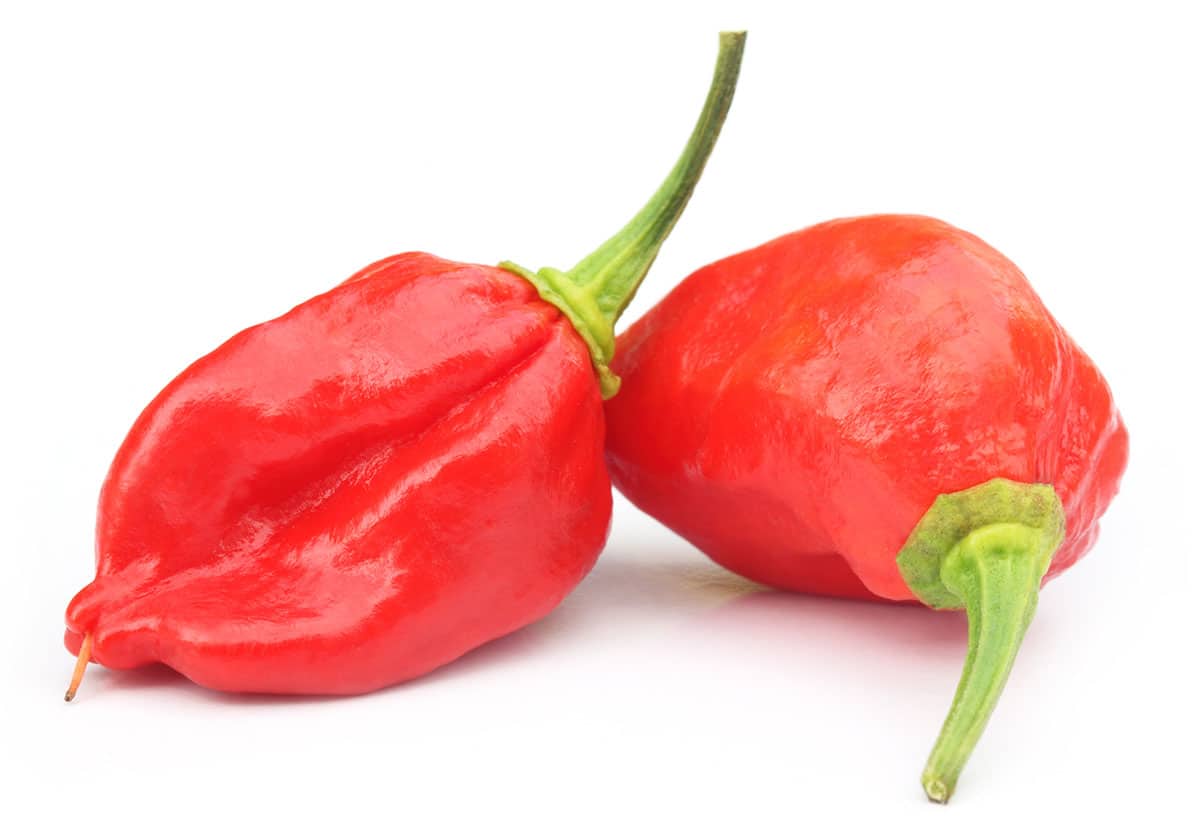
Trinidad Moruga Scorpion Pepper (SHU 1,600,000)
These are native to Trinidad where they were developed, but you can grow them in much of North America. The New Mexico State University Chili Pepper Institute (yes that is a real thing) named this the hottest pepper in the world in 2012, but it was soon supplanted.
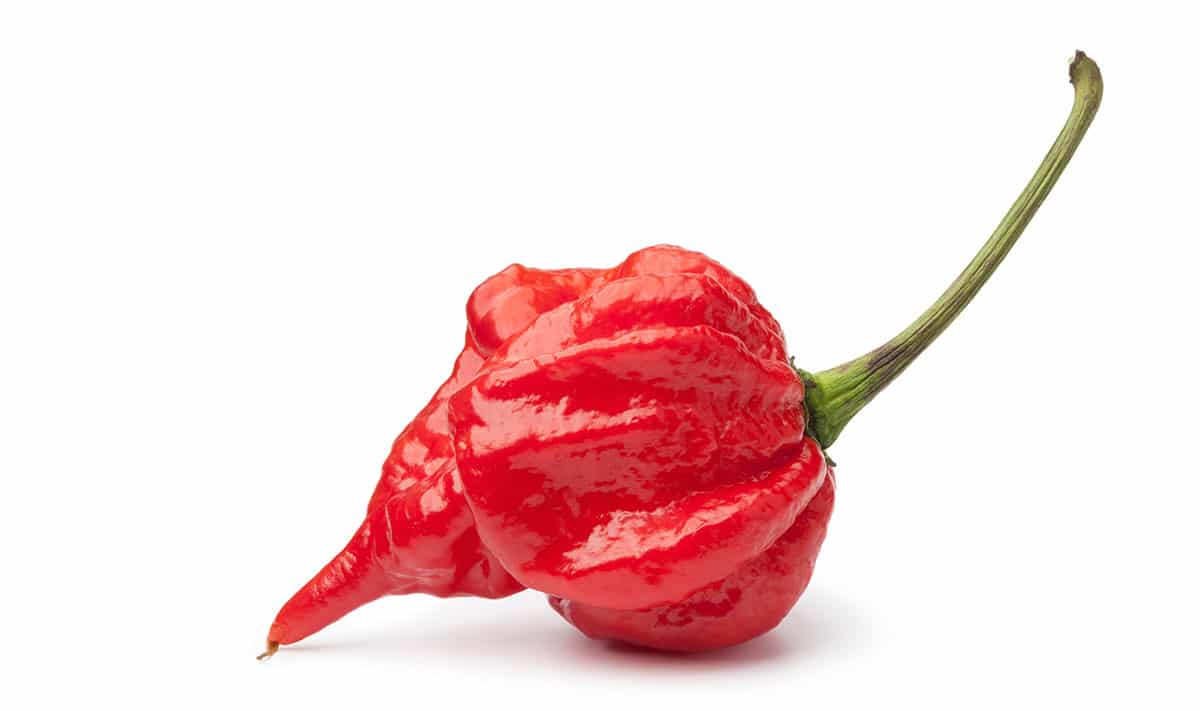
Carolina Reaper (SHU 1,000,000 to 2,200,000)
The Carolina Reaper may or may not be the hottest pepper in the world. The Guinness Book says it is. Keep in mind that pepper spray comes in around 5 million SHU, so they are pretty close to that can of fun. Still, they are used in making hot sauce, powders, flakes, crazy hot wings, and of course pepper eating contests.
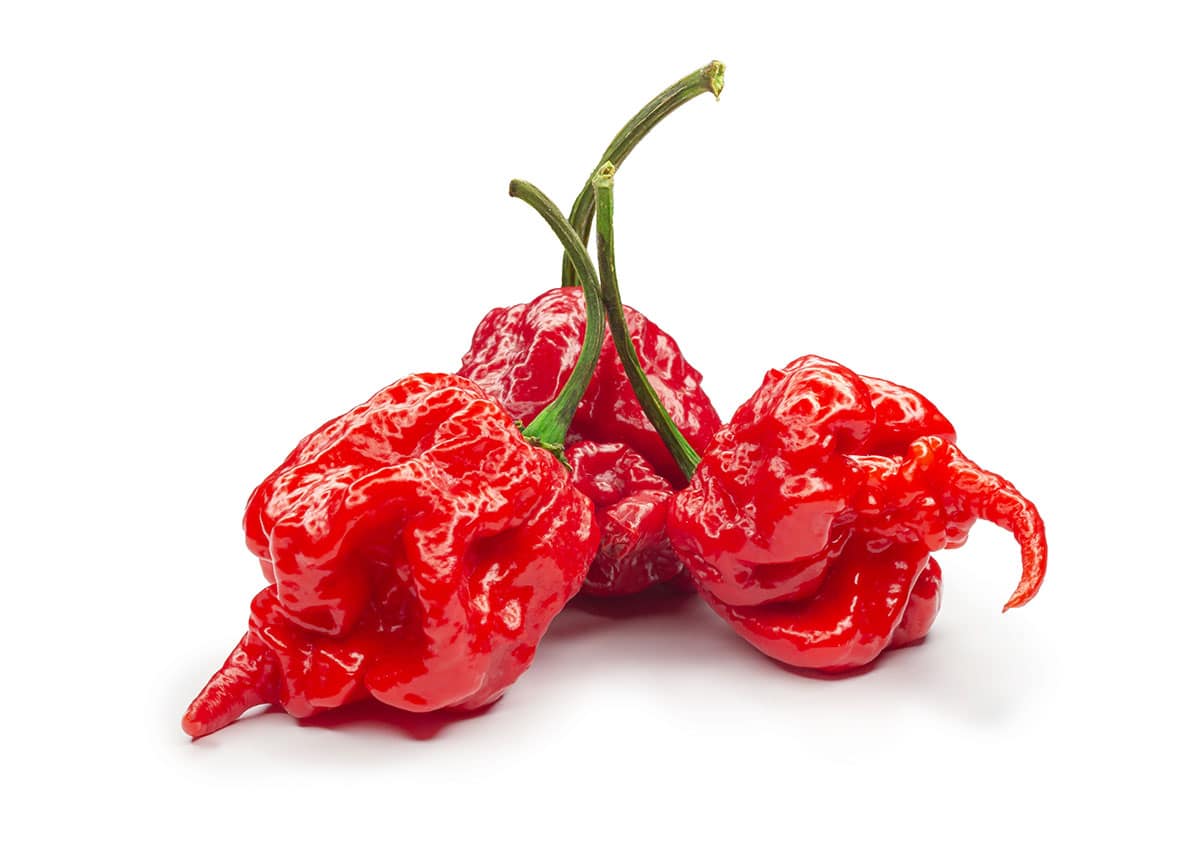
Dragon’s Breath (SHU 2,480,000)
As far as we know the high SHU has not yet been verified in official lab testing. The Dragon’s breath was accidently developed by a Welsh fruit planter.
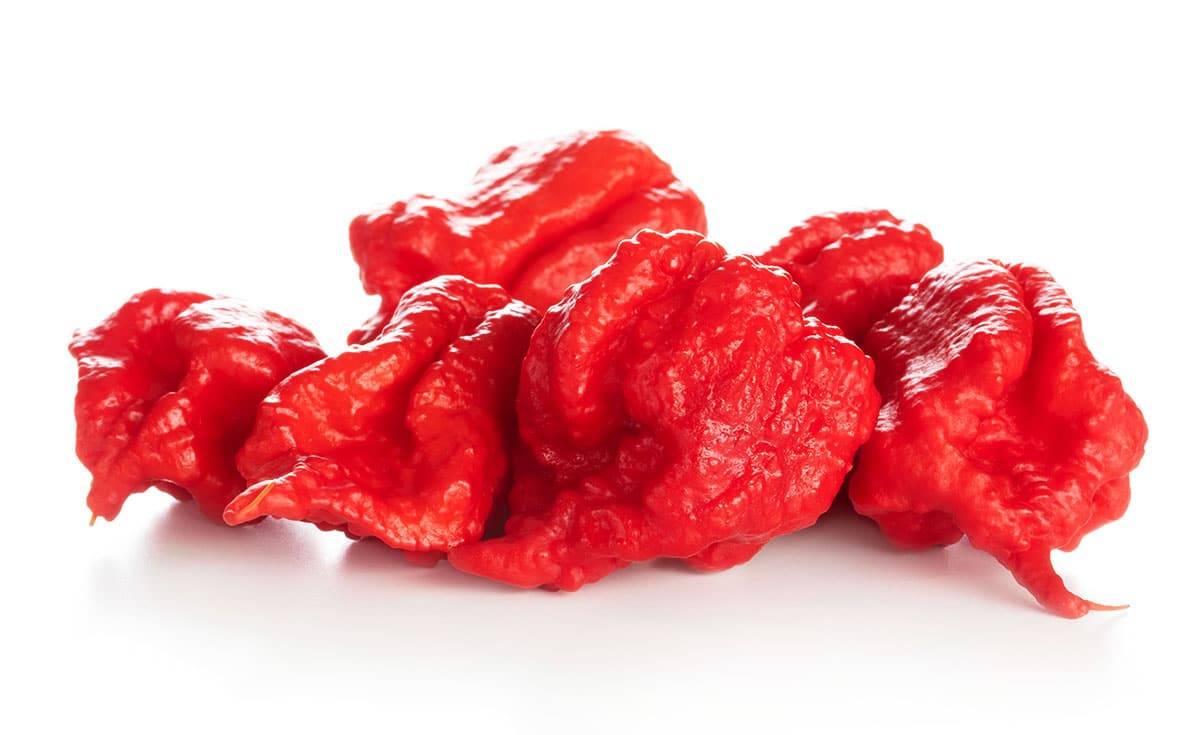
Pepper X (SHU 3,018,000)
Pepper X was developed by Ed Currie the man who created the Carolina Reaper. He claims they are twice as hot as the Reapers. The Guinness Book of World Records is for now sticking with the Carolina Reaper.
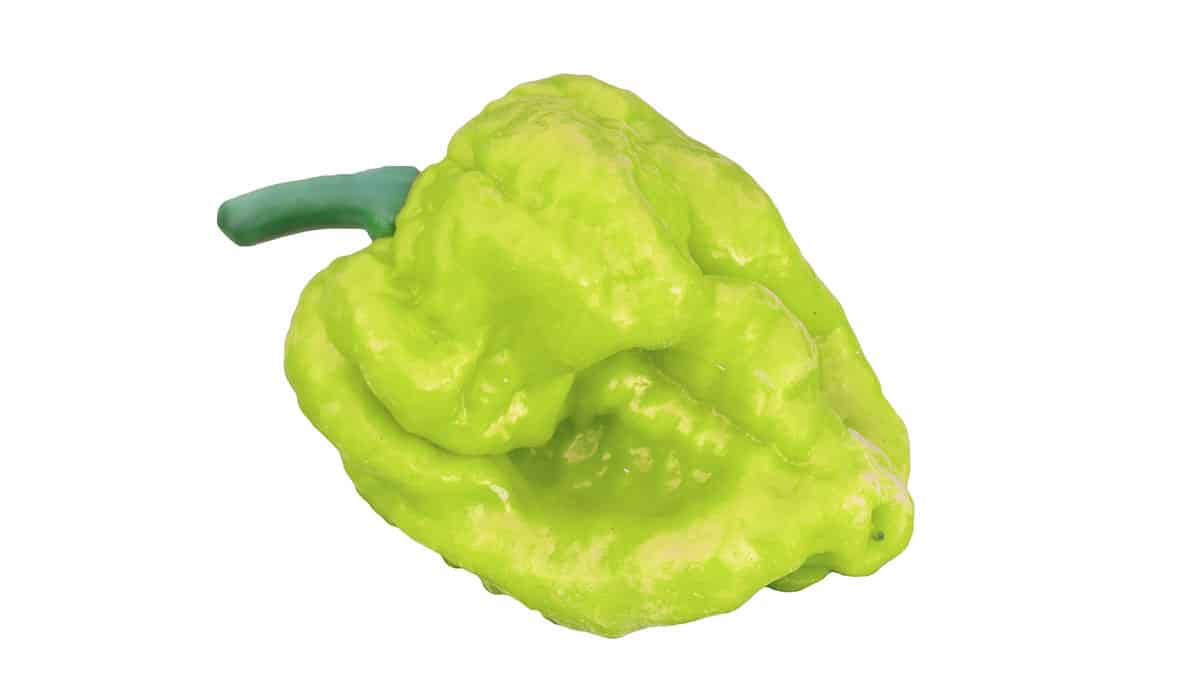
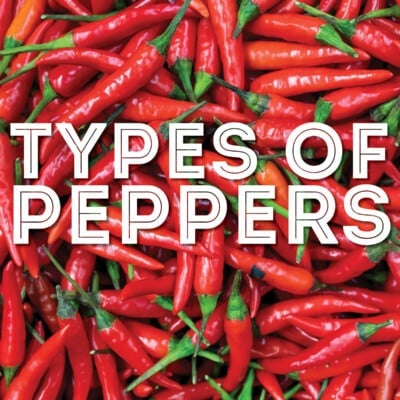
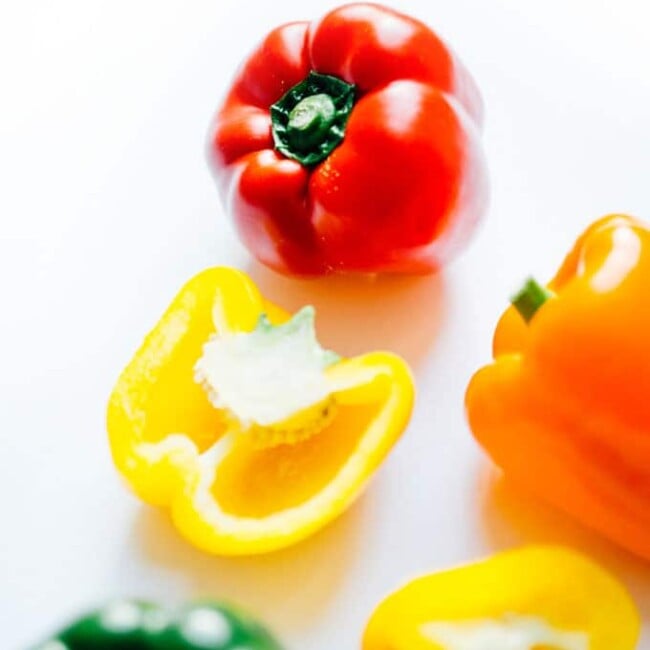
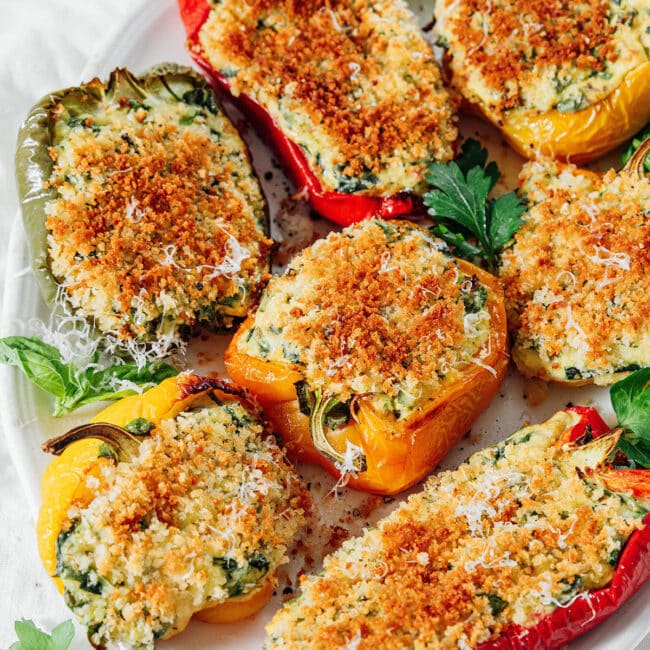


Hernan Melendez says
Hello Sarah; I just read about the 29 varieties of hot peppers. I’m from central Puerto Rico and love hot peppers since I was 8years old when my paternal grandfather trick me to bite on it, thought it was candy but I learned from it. Ever since I grow them ,eat them everyday even in sandwiches. Just love the flavor, just give a blessing flavor for supper. Thankyou Sarah. I have plants of caballeros, they are tiny round hot flavorful peppers. Well thankyou for your article. Please be safe and family!..
Berk says
Thanks a lot for the informative writings on pepper, really liked it while reading. Just curiuous, what is the max SHU level can an average person eat?
Sarah Bond says
It’s pretty hard to say because people have such different tolerances, but according to this article they start becoming deadly at 2 million SHU.
Lori says
We have a plant that has little bitty Red peppers, maybe An inch long. My husband says they are very, very hot.
And hes used to eating hot stuff! What could they be?
Sarah Bond says
Could they be bird’s eye peppers?
Dom Capistrano says
Could be “Siling Labuyo”. An inch long and 10mm wide at the widest body. Grown locally in the Bicol region of the Philippines. Really hot and used in many cuisines especially “Bicol express”. Also as a liquid dip (with vinegar + peppercorns + garlic + salt and sugar) kept in a bottle, the longer it is kept the better it gets.
Edwin Johnson says
Thanks for the information !!!
Theresa Robertson says
I have a pepper I can’t remember the name of, it looks like a habanero with the size shape and color but my daughter doesn’t think it is one because it’s not quite as hot. How can you tell what kind you have?
Sarah Bond says
It’s hard to say, there’s so many types out there! Do you see a picture that looks similar to your type of pepper in this article?
Basil philemon kalamila says
Thats good knowledge
Beth says
Thank you very much for this information. Want a little bit of spice in a sweet n spicy jam I am making. The recipe only shows 5 red hot peppers. There seems to be quite a difference in the heat levels for red chili peppers! Don’t want to burn my mouth. The photos are quite helpful.
Curious cat says
Sorry to say, but birdseye has the wrong photo. This is capsicum anuum and birdseye belongs to frutescens.
I have something like those too, just more thinn, very long (for this kind of pepper which are usually small ones) and not so extreme hot.
Im hobby botanist too and know about stuff….and eat laurelcherry-jam (beware, raw the fruit is poisonous)
Its always fun to try new food
Jacqueline Jackson says
Hello Sarah. About 2 years ago I grew some Trinidad Ghost Peppers. I made pepper sauce and gave them out as gifts. I’ve been trying to find more seeds but can’t find them. Have they changed the name? They were small in size and length and grew on small bushes. Thanks in advance for your help.
Sarah Bond says
They may also go by “Trinidad Scorpion” pepper!
Wyatt says
What happened to number 30?